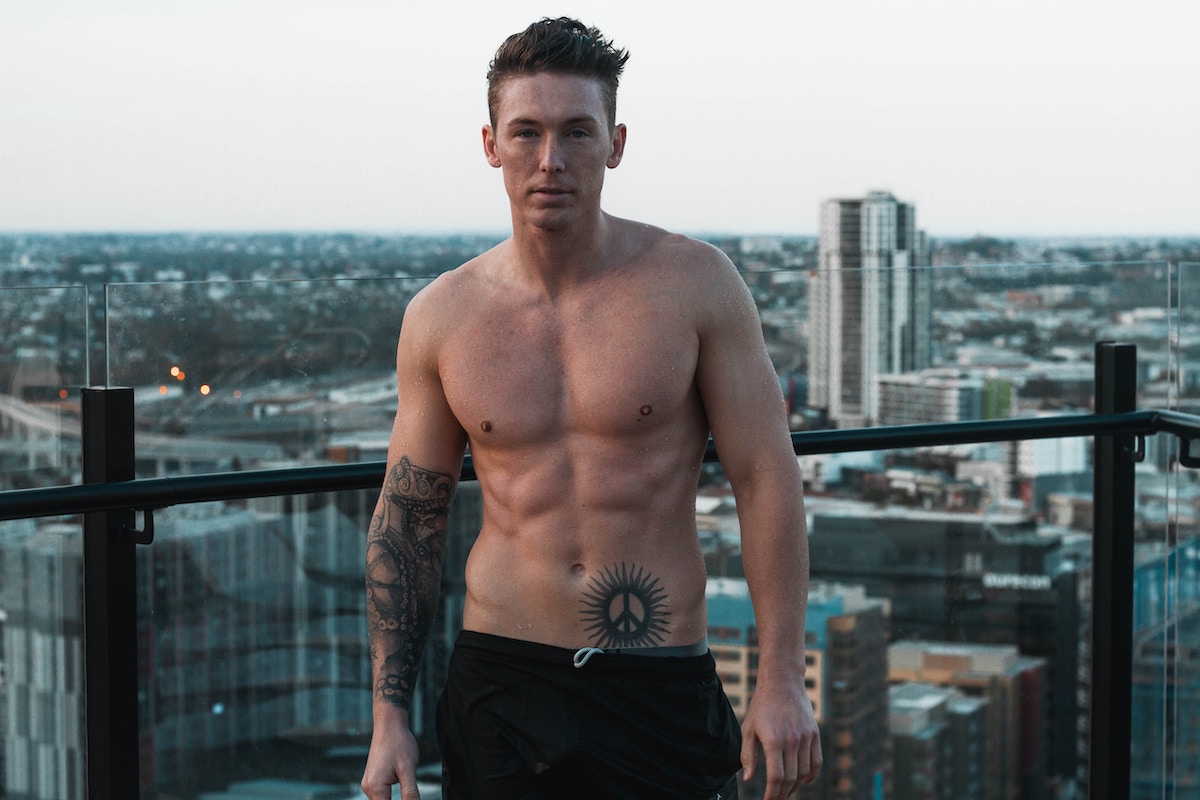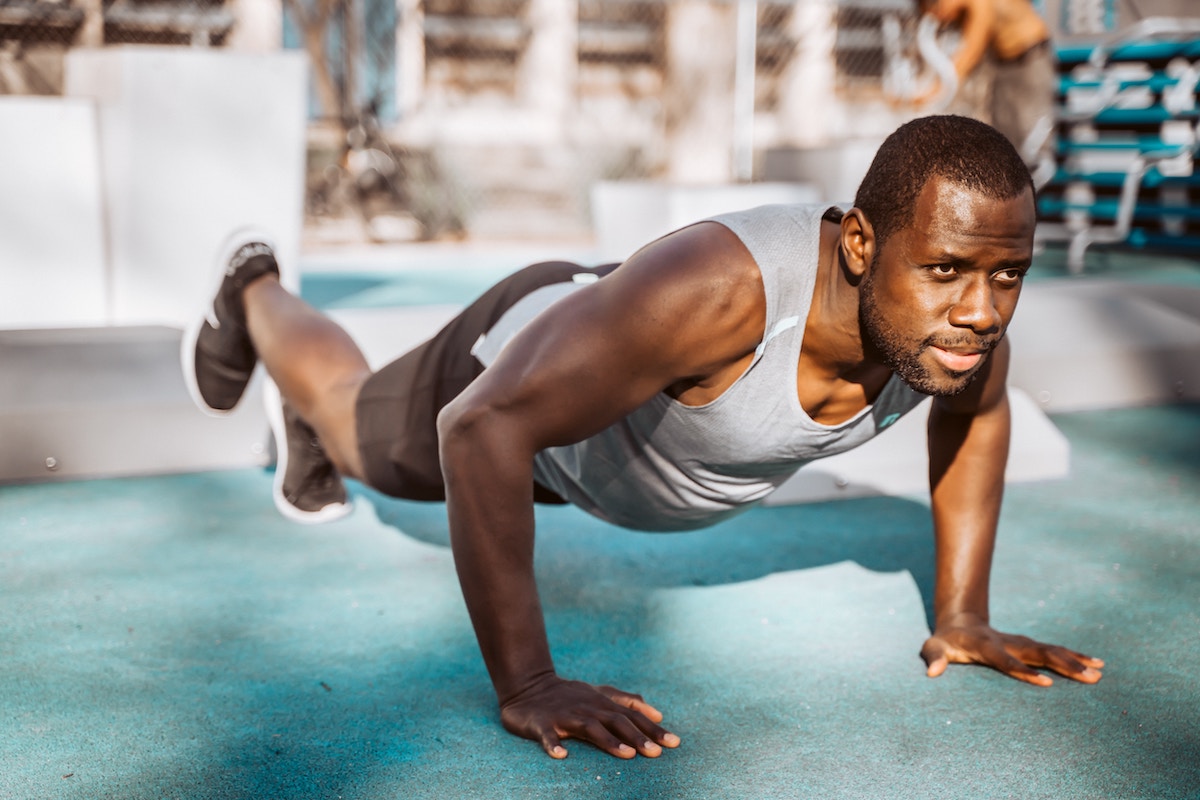
The biceps and triceps get tons of attention on arm day, but you also want to ensure you’re including chest workouts. The chest, which runs from the base of the neck to the bottom of your rib cage, plays a crucial role in posture. The muscles help keep the core, shoulders, and spine aligned so you sit upright instead of slouch (a common issue, especially if you have a desk job).
The chest muscles help you put some oomph into your throws during pick-up football or hoops games. You can’t lift something off a shelf daily without engaging the chest muscles. Can’t feel the chest working when you grab something off the top of your fridge? That’s likely because the muscles are functioning like a well-oiled machine.
Keeping them that way requires strength training. Don’t worry. You can do a pecs workout without bulking up — or a gym membership. Sculpt and strengthen these pivotal muscles using these seven at-home chest workouts.

Tips for getting a toned body and chest without bulking up
There is no precise definition of a ‘toned body’. Ultimately, the “ideal sculpted pecs” are a matter of personal opinion. That said, generally, people looking for tips for muscle toning want to look fit but not like a bodybuilder — not that there’s anything wrong with the latter. We all have our own goals. People striving for sculpted looks want to see some definition to muscles and less body fat. To achieve muscle definition in the chest, you’ll want to:
- Do chest exercises with resistance training. You might be hesitant to lift weights, fearing too much “bulk.” Performing chest workouts during a full-body strength training regimen two to three times per week for about 30 minutes isn’t going to bulk you up. Instead, you’ll build functional strength. Choose a weight that has you feeling challenged without ruining your form toward the end of each set.
- Cardio. Cardiovascular activity aids in fat burn. The American Heart Association recommends 150 minutes of moderate-intensity cardio per week. You can split these workouts up into five 30-minute sessions weekly.
- Diet. Abs were made in the kitchen, and so were pecs. As great as it would be to be able to work out and eat anything, that’s not the case. Though no food is ever completely off the table, prioritize consuming a regular diet of lean protein like fish or legumes, whole grains, fruits, and leafy green vegetables. Rocket science? No. Effective? Yes.
- Manage expectations. Genetics and age can influence how your muscles respond to diet and exercise. Be kind to yourself, and work your chest muscles so you can do activities you need to do and enjoy rather than an optimal “look.”
The best check workouts for toning sans bulk
You don’t need a ton of fancy equipment to do chest exercises. To perform these at-home pec workouts exercises, you’ll need a:
- Mat
- Wall
- Set of hand weights
- Your own body
Let’s get started.
Traditional push-up
Works: Chests, shoulders, core, and triceps
- Get on the floor on all fours in a plank position. (To modify, get on hands and knees like you were about to do a cat-cow).
- Engage the abs by drawing the navel into the spine.
- Bend your elbows to lower yourself to the floor. Keep the back straight.
- Stop when your elbows are bent at a 90-degree angle.
- Push yourself back up to the starting position.
- Repeat for 10-20 reps. Do 3-5 sets.
Incline push-up
Works: Chest (The incline isolates the chest in a way even the burn of traditional push-ups can’t. This move also reduces the impact on other arm joints and muscles, making the incline push-up a good one for people cleared by their doctors to come back from injury)
- Stand one arms-length from the wall with feet slightly wider than hip-width distance apart.
- Place hands on the wall with the fingers pointing up. Position them so they are slightly wider than shoulder-width apart.
- Bend the arms to move toward the wall.
- Stop just before your head hits the wall.
- Squeeze the chest muscles to engage them as you push yourself away from them.
- Repeat for 10-20 reps. Do 3-5 sets.
Plank to down dog
Works: Chest, shoulders, abs, glutes, and hamstrings
- Start in a plank position with your back straight.
- Squeeze the abs.
- Put your mind where your chest is, using the muscles to push your body away from the ground. Lift your hips to assume a down dog position.
- Hold for five seconds to feel a stretch.
- Slowly lower down.
- Repeat 10 times. Do 3-5 sets.
Plank-to-shoulder tap
Works: Core, shoulders, and chest
- Start in a plank position, ensuring wrists and shoulders are in one line.
- Pull your belly button into the spine.
- Keeping hips square to the ground, lift your right hand and tap your left shoulder.
- Return the right hand to start.
- Repeat on the opposite side for one rep.
- Repeat 10-20 times on each side. Do 3-5 sets.
Tricep dips on the floor
Works: Triceps and chest
- Sit with feet flat on the ground, slightly bent arms behind you, and fingers facing the opposite wall.
- Lift your hips off the ground to assume a modified reverse-plank position.
- Straighten your arms and lift your hips off the ground.
- Slowly return to start.
- Do 20 reps 3-5 times.
Dumbbell bench press
Works: Chest, triceps, and shoulders
- Lie flat on a mat with legs outstretched and a pair of dumbbells in either hand.
- Place the dumbbells at your chest.
- Slowly lift them, keeping the back straight, on the ground, and in a neutral position.
- Lower the dumbbells to start.
- Repeat 20 times. Perform 3-5 sets.
Dumbbell fly
Works: Chest, shoulders, triceps, and biceps
- Lie flat on your back with legs outstretched and a dumbbell in each hand.
- Lift the dumbbells straight overhead. Do not lock elbows.
- Slowly lower dumbbells toward your spine in an arched or curve-like formation.
- Stop before the arms get lower than the shoulders.
- Return to start in the same curved motion.
- Repeat 10 times for 3-5 sets.
Good form is critical. These moves should be challenging, but you shouldn’t be in great pain. Discuss any issues with a healthcare provider and personal trainer who can give personalized advice.




